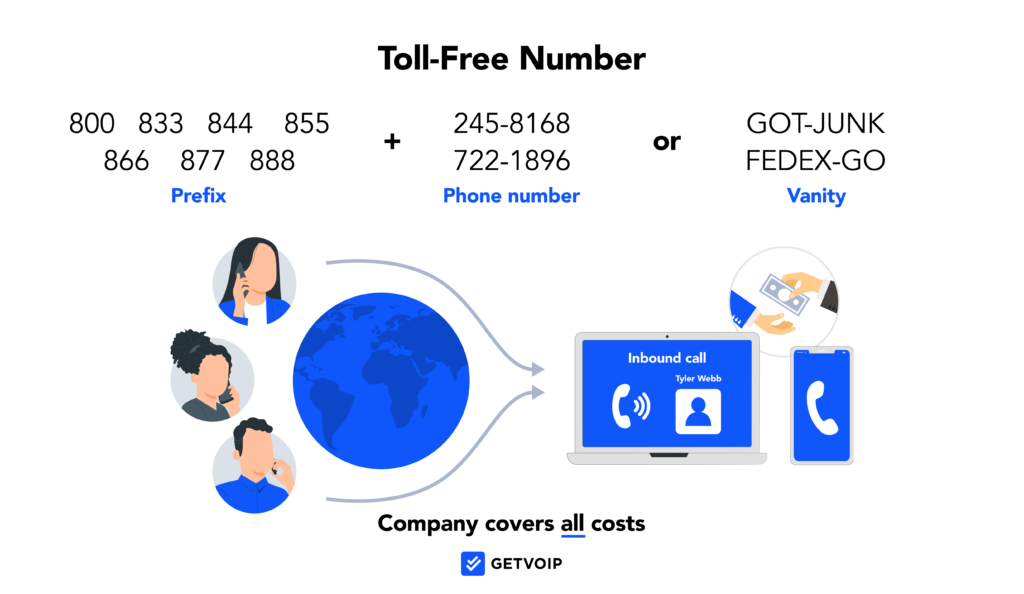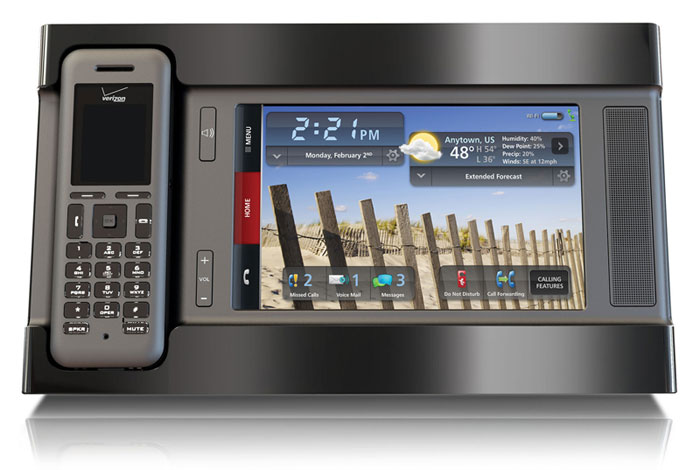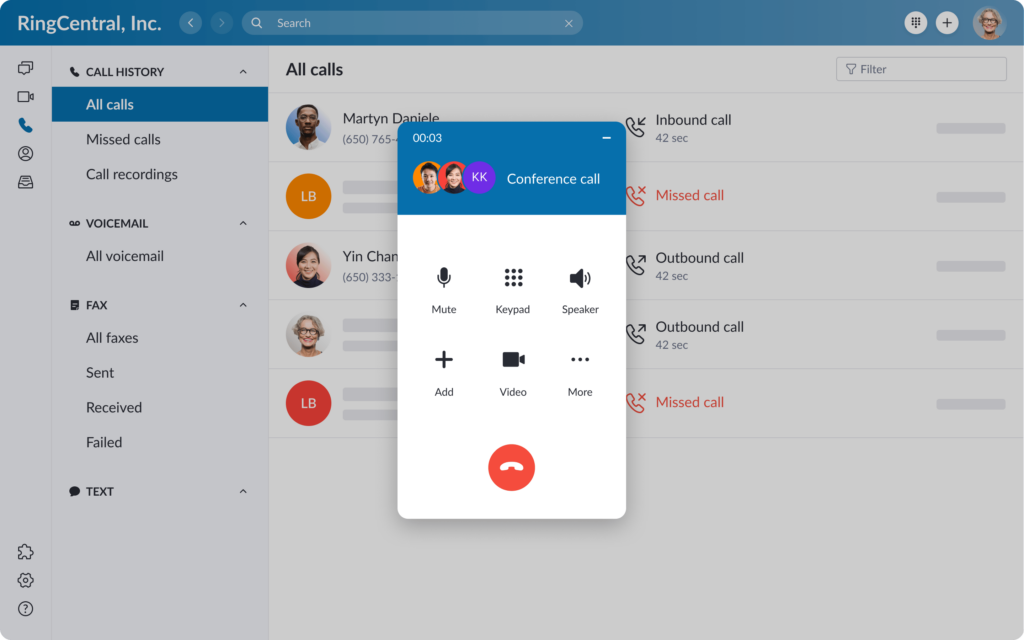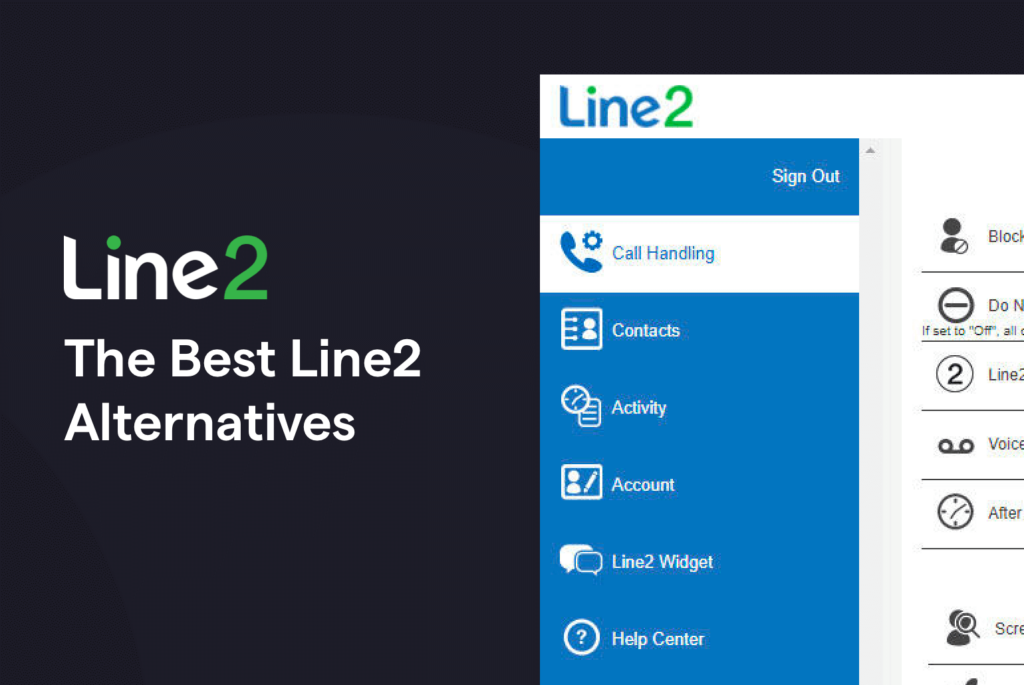Toll-free numbers generally start with prefixes like 800, 888, 877, 866, and so on.
They allow businesses to receive calls from customers or prospects without them incurring call costs. This helps drive more inbound calls and improve accessibility from anywhere nationwide.
For the business, obtaining a toll-free number involves choosing a phone carrier or VoIP provider that offers toll-free services, selecting a suitable phone plan, and purchasing a toll-free number add-on.
The provider will provision the number on their network and enable call routing to the business phones.
Ongoing costs for a toll-free number include monthly fees and per-minute usage charges when customers call.
Businesses can pick specialized vanity numbers that spell out a brand name or slogan.

What is a Toll-Free Number?
A toll-free number, also known as a freephone number or 800 number, is a special type of telephone number that is free for the calling party and instead billed to the receiving party.
When a customer calls a toll-free number, they are not charged any fee for the call by their telephone carrier or mobile operator.
When someone dials a toll-free number on their phone, the telecommunications carrier identifies it as a toll-free number based on the prefix and routes the call to the subscribed business customer instead of charging the caller.
The receiving party business then pays the cost of receiving the inbound call.
So in simple terms, toll-free numbers provide businesses a way to receive calls from customers for free without incurring any call charges or fees. The cost of the call is borne by the company instead of the individual making the call.
Over 8 million toll-free numbers are in use across the United States today. Toll-free calling generates around 5 billion minutes per month of usage in the US which amounts to over 60 billion minutes annually.
The 800 prefix accounts for the vast majority of this usage. That indicates the wide popularity and adoption of toll-free numbers by American businesses.

How Does a Toll-Free Number Work?
A toll-free number works through a special network architecture and call routing system known as the Service Access Code (SAC) network. It is maintained collectively by telecommunications carriers in each country.
When a customer dials a toll-free number on their phone, the call is identified by the local telephone company based on identifying the number as having a toll-free prefix. The call is passed into the SAC network to be routed.
The SAC network contains a database mapping all working toll-free numbers to their associated terminating numbers. The terminating number is the actual geographic phone number of the business.
The SAC network looks up the dialed toll-free number in its database and finds the mapped terminating number to route the call to.
The call is then forwarded to the terminating number destination which could be a business POTS landline, VoIP phone system, call center, etc.
The receiving business phone rings and the call is delivered just like a normal call. The person answering the phone is unaware whether the caller dialed a toll-free number or regular number to reach them.
Instead of billing the calling party, the telecommunications carrier identifies the call as originating from a toll-free number being used by one of its business customers.
The carrier then charges the toll-free subscriber for receiving the inbound call based on factors like duration, time of day, originating location, and distance band.
The business customer pays this call fee as part of their regular monthly phone bill for service. So the telecom carrier can recover the cost of carrying and terminating the toll-free call.
This creates a free calling environment for the customer while allowing businesses to pay for the cost of inbound calls.
The key steps are:
- Customer calls the toll-free number on their phone
- Local phone company identifies toll-free prefix and passes call into SAC network
- The SAC network database maps toll-free numbers to terminating numbers
- The call is routed over the network to the terminating number
- Business landline or VoIP system rings with incoming call
- The Telecom carrier charges the toll-free business subscriber for the call
- The toll-free subscriber pays call charges on the monthly bill
This behind-the-scenes routing and billing make toll-free calling seamless and free for the customer.
Benefits of Toll-Free Numbers for Businesses
Toll-free numbers provide wide-ranging benefits for businesses across industries:
1. Increased Sales and Orders
Toll-free numbers help drive more inbound calls to businesses since customers can call for free. The increased call volume directly translates into more sales and orders for companies.
Studies show that businesses offering toll-free numbers can achieve around 20-30% more call volume compared to normal numbers. The free and easy customer access results in higher conversion rates and order volumes.
Retail stores, e-commerce websites, lead generation services, etc. heavily benefit from toll-free numbers which make it simple for customers to call and place orders.
Even traditional offline businesses like restaurants see a noticeable increase in bookings and orders by using toll-free numbers. So the zero cost of calling made possible by toll-free numbers has a direct and measurable impact on increasing revenues for companies.
2. Wider Geographic Reach
Toll-free numbers expand a business’ reach and accessibility across multiple cities, states, and regions by allowing customers to call them for free from anywhere.
Small businesses in a single locality can affordably scale beyond their local geographic area to gain customers statewide or nationwide using a single toll-free number.
Instead of just sharing local numbers, companies can publish a national toll-free contact number in all their marketing materials, websites, catalogs, and ads. Customers are more likely to contact companies using a toll-free number as they know they will not be charged for calling even from another city or state.
This helps smaller businesses punch above their weight and compete with larger national players. A flower shop can take orders from across the state. A restaurant can book tables from nearby towns. A plumber can schedule appointments from neighboring counties.
3. Improved Brand Image and Recall
Toll-free numbers help project a more professional and reputable company image. They make businesses appear larger, more established, stable, and customer-focused.
Even smaller and newer companies can portray national presence using toll-free numbers which customers associate with large national brands.
Using a memorable customized toll-free number that spells out the company name or slogan further builds brand recognition and recall. 1-800-FLOWERS is a classic example.
The ease of remembering a vanity toll-free number makes the public more likely to think of the brand and contact them directly rather than search.
4. Increased Customer Satisfaction
By removing cost barriers and friction, toll-free numbers provide higher customer satisfaction. Customers love the ability to contact companies for free.
Since calling is effortless, customers are more likely to reach out for information or support. Toll-free access improves brand loyalty for companies as customers have a positive experience.
For businesses that depend on providing phone support, toll-free numbers are indispensable to resolving issues quickly.
Customers don’t hesitate to call support teams with questions which improves satisfaction.
4. Flexible Call Routing and Tracking
Toll-free numbers enable flexible call routing options beyond just ringing a single landline at one location. This allows for efficient handling of inbound calls.
Calls to toll-free numbers can be routed based on time of day, originating location, language preference, etc. Real-time conditions like queue lengths, staff availability, etc can also be used.
Companies can set up different routing rules, automatic call distribution queues, IVR menus, automated attendants, etc. to serve customers better.
Unique toll-free numbers assigned for each marketing campaign allow for tracking of the response and ROI. Special routing can be applied to high-priority calls.
Detailed analytics provide insights on total call volume, duration, origin, peaks, and other metrics to improve operations.

5. Portability and Number Stability
Toll-free numbers can be kept unchanged irrespective of the physical location, phone system, and service provider a business uses. This number of portability and stability builds familiarity.
Companies can take their toll-free number with them seamlessly when they relocate offices across cities or states. The number remains the same even when switching between landline and VoIP providers.
For customers, the toll-free number stays constant as a reliable way to reach the business. Within the company, it reduces disruption and costs when scaling up, adding locations, or modernizing systems.
6. Shared Call Center Support
Some providers allow multiple unrelated businesses to share a single toll-free number and distribute inbound calls between them in a round-robin fashion.
For example, calls to a 1-800 number could ring 5 home cleaning businesses in rotation helping them share the costs.
This creates an easy and affordable way for small businesses to benefit from toll-free numbers and shared call center resources. The toll-free number presents a unified professional front to customers rather than revealing the individual businesses.
How to Get a Toll-Free Number for Your Business?
Getting a toll-free number for your business involves a straightforward process:
Step 1. Selecting a Telecom Carrier
The first step is choosing a telecommunications carrier or VoIP business phone service provider that offers toll-free numbers on their network.
Multiple options exist across big carriers like AT&T, Verizon, CenturyLink, etc. to newer VoIP providers like RingCentral, Nextiva, 8×8, etc.
Compare plans, pricing, features, reliability, and customer service to pick a provider that best fits your requirements.
Step 2. Determining Usage Needs
Assess expected usage needs before requesting a toll-free number to select the right service plan:
- What are the main usage purposes – sales, customer service, or both?
- Will it be shared by multiple locations or users?
- What call volume do you estimate every month?
- How many simultaneous calls need handling?
- Is call routing or an IVR system required?
- Any special features like call recording or analytics?
This helps size the capacity, features, and costs correctly.
Step 3. Picking the Number
Browse available toll-free numbers in the provider’s inventory and shortlist the numbers you like. Numbers can be searched on their website or portal.
Pick a number that is easy to remember – the easier the better. Avoid prefixes or digits that could be misdialed.
Steer clear of custom vanity numbers that spell your name since those cost more. Stick to a randomly assigned number unless you have specific reasons to invest in a vanity number.
Step 4. Signing Up for Service
Contact your selected telecom carrier sales representative to open a new account. Sign up for a business phone plan that allows adding toll-free numbers.
Some providers offer toll-free numbers as an add-on or separate package that must be combined with a basic phone service plan.
Discuss any upfront or monthly fees for the toll-free number service with the sales rep. Also, check number portability policies in case you switch providers later.
Step 5. Activating the Number
The carrier will now assign the chosen toll-free number to your account and initiate provisioning it on their network.
This involves configuring their systems and the SAC network that powers toll-free calling to map your new number to your account and terminate calls accordingly.
The provisioning process typically takes 1-2 weeks to fully complete depending on the provider.
Step 6. Testing Call Functionality
Once provisioning is completed, test calling the toll-free number from different locations to ensure it rings your business phones as expected.
If you face any issues with call connectivity or routing, contact support immediately to troubleshoot. Monitoring early customer feedback also helps identify problems.
When fully functional after testing, you can officially launch and publicize your new business toll-free number!
How Are Toll-Free Numbers Assigned and Managed?
Toll-free numbers are assigned and administered by the National Numbering Plan Administrator in each country. For instance, in the United States, it is the Federal Communications Commission (FCC).
The FCC oversees the toll-free numbering system, defines rules and policies, allocates number blocks to providers, and ensures optimal number utilization.
Telecom carriers obtain pools of toll-free numbers from the FCC through the North American Numbering Plan Administration (NANPA). These numbers are kept in the provider’s inventory.
When a business requests a new toll-free number, the provider assigns one from their available inventory in a sequential manner. This explains the random nature of assigned toll-free numbers.
Vanity toll-free numbers that translate into a brand name or slogan need to be specially requested and registered. These are costlier and subject to availability.
The FCC has designated certain toll-free prefixes for public information and assistance purposes. For instance 911 for emergency response. 1800 numbers were similarly reserved in the past for government helplines.
So in summary, toll-free numbers are:
- Assigned to carriers in blocks by the national Number Administrator
- Randomly assigned to customers by providers from inventory
- Can be specially requested as customized vanity numbers
- Some prefixes reserved for public service use
This centralized administration guarantees unique nationwide numbering and fair distribution. Without it, chaos would prevail if companies randomly selected numbers themselves.
The FCC has the authority to introduce new toll-free prefixes and retire older ones. Carriers must comply and update their systems based on these changes.
So the FCC plays a pivotal role in ensuring nationwide standards, interoperability, numbering optimization, and innovation in the toll-free system.
Types of Toll-Free Numbers
There are several different types and categories of toll-free numbers:
1. Vanity Numbers
Vanity toll-free numbers spell out the name, slogan, or other phrases representing a business in numbers. For example, 1-800-FLOWERS which spells the florist’s name.
Vanity numbers are highly sought after for branding and memorability but cost extra to acquire from providers. The setup fee can range from $500 to $5000 based on how seemingly desirable and scarce the word or phrase is.
Periodic renewal fees apply to continue using created vanity numbers beyond the initial registration tenure. Companies consider it a marketing investment. Vanity numbers are selectively assigned on a first-come, first-served basis only to eligible businesses.
They cannot contain anything explicit, offensive, or illegal. Disputes around similar vanity numbers are resolved based on factors like date of first use, brand recognition, etc.

2. Location-Based Numbers
Some providers allow picking toll-free numbers linked to specific area codes and metro regions, like a Dallas toll-free number starting with 214. This helps identify the geographical location or market in the number itself.
But the call routing and billing work similarly to regular toll-free numbers. These location-based vanities are popular with businesses having multiple local offices or a strong regional affiliation.
3. Shared Toll-Free Numbers
Unrelated businesses can share the use of a single toll-free number with the calls going to each business in a round-robin manner.
The benefits are lower costs due to sharing and presenting a unified virtual call center interface to the outside. Mainly used by micro and small businesses that cannot justify the expense of a dedicated toll-free number on their own.
4. VoIP Toll-Free Numbers
These are toll-free numbers assigned over VoIP networks instead of traditional landline technology. They typically offer enhanced call routing flexibility and cost savings but have lower reliability on mobile networks.
VoIP toll-free numbers usually start with prefixes like 833, 844, and 855 which are newly approved for toll-free service as demand increases.
5. Local Access Numbers
Local access numbers allow customers to dial a local number to reach a national toll-free number. Charges apply for the local call which is less than long distance. This reduces calling costs for customers in the pre-mobile era.
For example, a Seattle business could provide a local 206 number to access their 800 number. Used before nationwide flat-rate calling plans became common.
6. Emergency Service Numbers
These are special toll-free numbers allocated for public emergency response services, the most prominent being 911 in North America and 112 across Europe.
Anyone can call these numbers toll-free from any phone to reach emergency dispatchers. Specific legislation governs the proper handling and routing of these emergency calls.
7. Information and Helpline Numbers
Historically toll-free numbers starting with prefixes like 1800 were set aside for government and public helplines in some countries, but are now open for commercial use. Still common in Australia and the UK.
8. Universal International Freephone Numbers
UIFN allows businesses to get a single toll-free number that works globally across countries. However, uptake is low due to high costs and patchy international support by some carriers.
Cost Economics of Toll-Free Numbers
The costs involved in acquiring, operating and maintaining toll-free numbers include:
1. Number Setup and Provisioning
Telecom carriers charge an initial one-time fee to set up and activate a new toll-free number on their network. This typically costs between $5 to $100 depending on the provider.
Complex number porting or vanity numbers may cost extra. Some providers offer 1-2 toll-free numbers bundled with service plans. The setup fees help partially recover provisioning costs.
2. Monthly Number Charges
Providers also levy a recurring monthly subscription fee to maintain and service access to each toll-free number on their network. This normally ranges from $2 to $10 per toll-free number.
Sometimes a monthly usage allowance is included, beyond which per-minute rates apply. Monthly charges account for ongoing administrative overheads.

3. Per Minute Usage Fees
The major cost of operating toll-free numbers is the per-minute usage charges levied by carriers for inbound calls received. This can vary from $0.01 to $0.10+ per minute based on factors like:
- Time of Day: common to charge more during business hours than on nights/weekends
- Distance Band: higher rates for long-distance calls than local calls
- Originating Carrier: underlying wholesale interconnect fees to factor in
- Volume Discounts: negotiated bulk rates for high-volume customers
- Premium Routing: add-ons like location or skills-based routing
Overage charges apply if the monthly allowance is exceeded. Per-minute usage costs make up the largest share of toll-free operating costs.
4. Vanity Number Fee
Owning a vanity toll-free number that spells a business name or slogan costs extra compared to regular assigned numbers. Easy-to-remember vanity numbers that spell a brand name or phrase cost extra. The setup fee is from $500 to $5000 depending on desirability. Renewal fees also apply to retain the number.
Who Should Use Toll-Free Numbers?
Here are some of the business types that benefit the most from having toll-free numbers:
1. Large National Businesses
Toll-free numbers allow large companies spanning multiple locations to present a unified national image. Calls from any place are free for customers.
2. Catalog and eCommerce Companies
Toll-free numbers make it easy for customers to enquire and place orders. This increases conversions for catalog and online retailers.
3. Businesses with Phone Orders
Any business that receives orders over the phone sees higher call volumes and sales using toll-free numbers due to greater customer ease.
4. Customer Support
Businesses that offer phone customer service improve satisfaction by providing toll-free support lines. Call wait times were also reduced.
5. Appointment Scheduling
Doctors, restaurants, repair services, etc. that take appointments over the phone find toll-free numbers very effective.
6. National Campaigns
Businesses running national marketing campaigns across different media can benefit from a single memorable toll-free number.
7. Rural Businesses
Businesses located in rural areas can provide customers with an affordable national calling option using toll-free numbers.
8. Startups
Early-stage startups can project an established image by acquiring toll-free numbers even before launch. Vanity numbers build brand recognition.
In summary, toll-free numbers offer advantages across a wide spectrum of industries and business types – both large established companies as well as small startups operating nationally.
Overview of Toll-Free Number Providers
Some top telecom carriers and business VoIP providers offering toll-free number services are:
1. AT&T
A major US telecom provider offering toll-free numbers across traditional POTS and VoIP technology. Plus call routing and detailed analytics.

2. Verizon
Another large telecom carrier provides toll-free number options combined with their phone service plans. Automatic call distribution is available.

3. RingCentral
Leading VoIP phone system provider with vanity and local number choices. Call management integrated with cloud business phone service.

4. Grasshopper
A popular virtual PBX phone service for small businesses including toll-free numbers with call forwarding, routing, etc.

5. Vonage
Offers toll-free numbers fully configured with their VoIP business phone plans and UCaaS solutions.
6. Twilio
Voice, video, and messaging platforms are popular for toll-free numbers with programmable capabilities and worldwide reach.
7. Line2
Cloud business phone service with US and Canadian toll-free numbers. Features include call menus, conferencing, and CRM integrations.

8. Phone.com
Provides global toll-free numbers for over 60 countries. Works across desktop and mobile apps. Call routing options available.
This covers some of the major toll-free number providers. Compare capabilities, reliability, costs, and reviews before choosing the right service.
Frequently Asked Questions (FAQ)
Ques 1. Why are they called toll-free numbers?
Ans. They are called toll-free because the customer calling them does not have to pay any fee or toll charge. The call cost is covered by the receiving party instead of the caller.
Ques 2. Can I call a toll-free number from any phone?
Ans. Yes, toll-free numbers can be called for free from any type of phone – cell phones, landlines, pay phones, etc. As long as the telecom carrier supports toll-free calling, the call will go through.
Ques 3. Are toll-free numbers free to get?
Ans. No, businesses have to pay providers an ongoing fee for using a toll-free number even though customers call for free. The business pays for the inbound call cost and number charges.
Ques 4. What happens when I call a disconnected toll-free number?
Ans. You will get a network recording saying the number is disconnected or no longer in service. The number can be reassigned to another business after some time.
Ques 5. Can I choose any toll-free number I want?
Ans. Vanity numbers that spell a brand name are possible but cost more. Otherwise, you can pick any available number but cannot specify a custom number.






